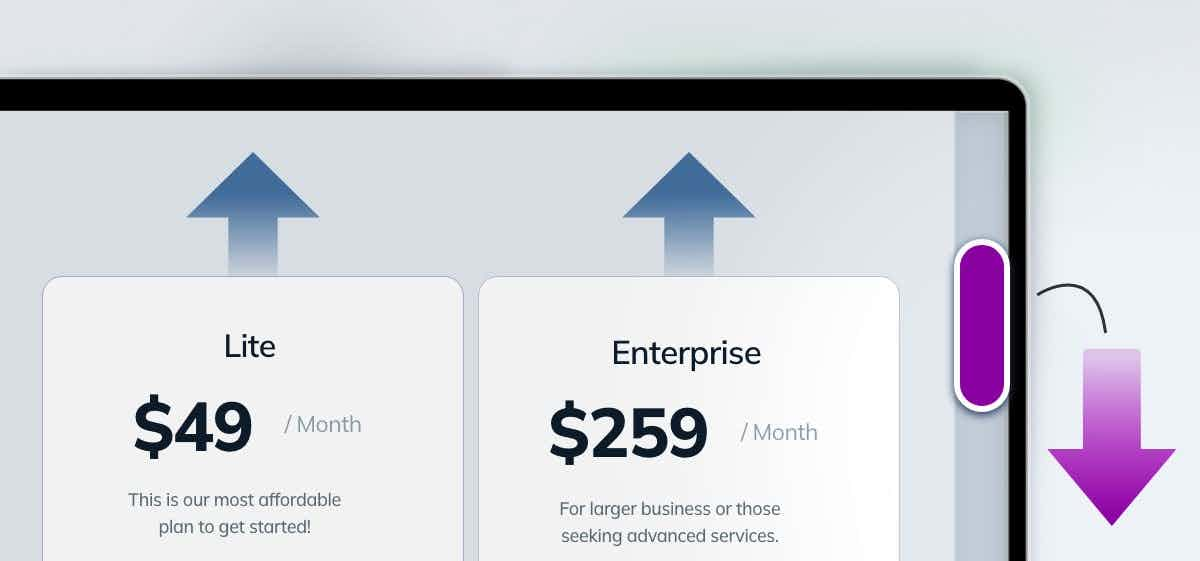Animate Prices With Light Physics
Speed and movement can influence perceived size. Perhaps animations or scrolling can influence the size of prices.

Overview
Speed and size are intertwined.
In the physical world: Large objects move slow; small objects move fast.
Turns out, we overextend these patterns.
Any motion — slow or fast — can activate a typical size.
For example, participants watched a digital ad for an electronic speaker. The faster it moved? The smaller it seemed (Jia, Kim, & Ge, 2020).
In a follow-up study, motion influenced their willingness to pay: Participants who wanted a portable device were willing to spend more if the device moved quickly.
"...when products (e.g., consumer electronics) are animated to vibrate, bounce, turn around, and spin spontaneously in videos, their overall movement patterns may look similar to various movements that insects or birds perform in the air, fish perform in the water, dancers perform on the stage... observing a product’s movements can activate nodes about animate agents’ movements and, consequently, the size–speed association in consumers’ memories" (Jia, Kim, & Ge, 2020, p. 102)
Maybe it impacts prices too.
What if you eased scrolling on a pricing page?
Prices would move up easily and effortlessly. Would they seem lighter and smaller?

"Scrolljacking" can often hurt UX, but maybe there's a subtle approach, parallax effect, or other technique that could work.
Takeaways:
- Slow is Durable, Fast is Portable. Show the right speed for the right product in ads.
- Display Prices at the Top. Objects must be small to be lifted up high. Thanks to this daily experience, prices feel cheaper toward the top of a design. See my tactic on price location.
- Don't Animate the Price Itself. Motion captures attention because it's unpredictably dangerous. While customers are debating their purchase, don't needlessly animate a price. Customers will focus on it, subconsciously inferring that it has more capacity to change.
Other New Stuff
- When Persuasion Expires - Anchoring is a robust effect. Think of a high number? You perceive a new number (e.g., price) to be lower. But these effects were eliminated when participants walked into a new room (vs. walked down the same hallway; Ongchoco, Walter-Terrill, & Scholl, 2023). New scenery can reset our mindset. The same effect might happen if you bring users to a new layout screen in your app or web funnel.
- Questionable Recommendations - What if you recommend a product to your friend, but they don't like it? Turns out, you start feeling less enjoyment with the product, questioning your original desire for it (Hall, Hyodo, & Kristofferson, 2023).
- AI Faces Are More Trustworthy - Faces generated with AI look more average, so they feel more trustworthy than real faces (Nightingale & Farid, 2022).